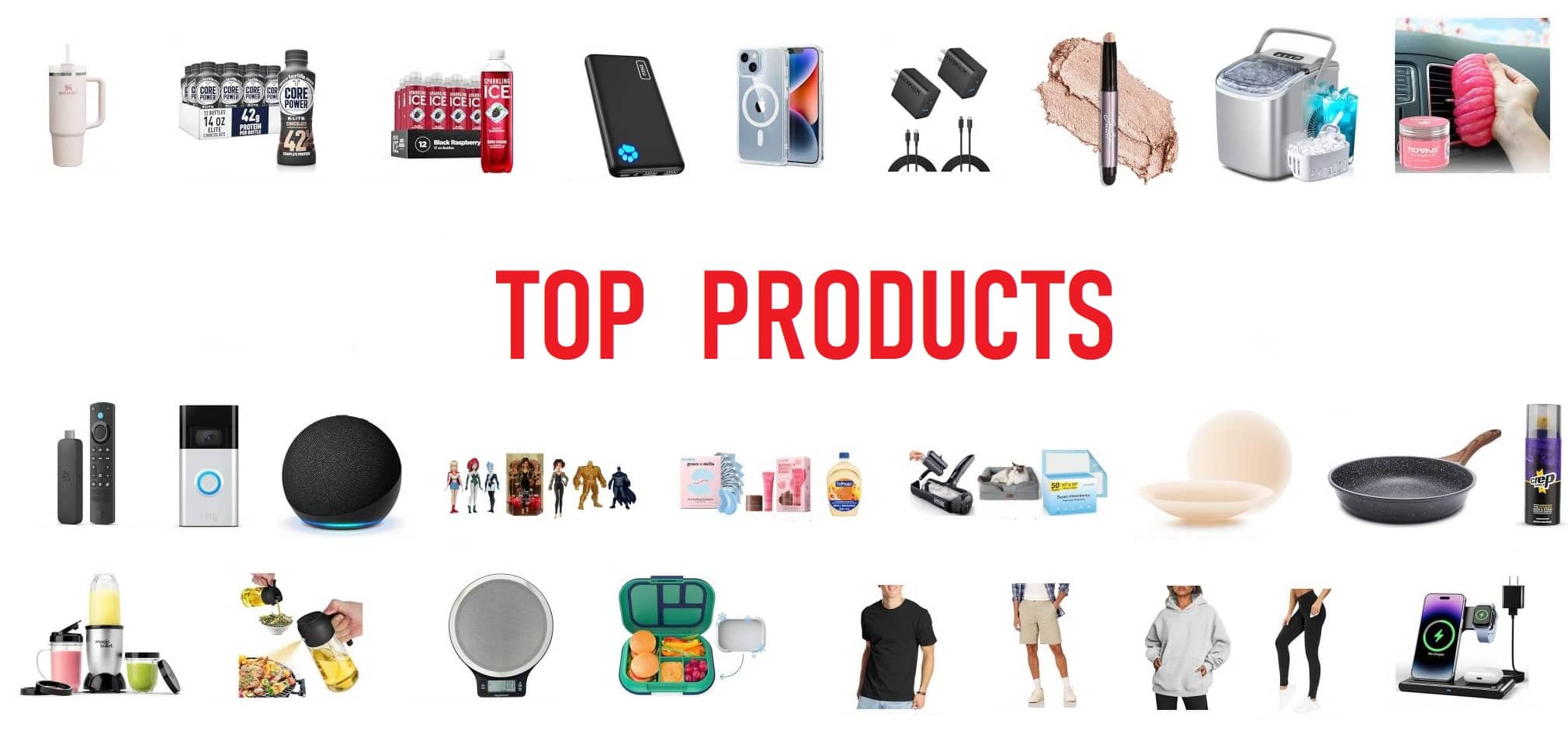Starting and growing a successful Amazon business can seem like a daunting task, but with the right guidance, you can turn your idea into a thriving online store. Whether you’re launching a private label product, scaling your FBA business, or navigating Amazon’s complex landscape, this guide will walk you through the essential steps to build a successful Amazon business.

How to Start an Amazon Business from Scratch
Getting started with Amazon requires careful planning and execution. Here’s a step-by-step guide to help you launch your Amazon business:
- Research and Choose a Niche: Identify a niche with high demand and low competition. Use tools like Jungle Scout or Helium 10 to find profitable products.
- Create a Business Plan: Outline your business goals, target market, and marketing strategy. A solid business plan will guide your decisions and help you stay focused.
- Register Your Business: Choose a business structure (e.g., sole proprietorship, LLC) and register your business with the appropriate authorities. This step is crucial for legal and tax purposes.
- Set Up Your Amazon Seller Account: Sign up for an Amazon Seller Central account. Decide whether you want to use the Individual or Professional plan based on your needs.
- Source Your Products: Find reliable suppliers or manufacturers. You can source products locally or internationally. Consider using platforms like Alibaba for international suppliers.
- Create Your Product Listings: Write compelling product titles, descriptions, and bullet points. Use high-quality images and include relevant keywords to improve your listing’s visibility.
- Launch Your Products: Once your listings are live, monitor their performance. Adjust your strategies based on customer feedback and sales data.
Example: If you’re launching a line of eco-friendly kitchen products, ensure your listings highlight their sustainability benefits and provide clear, high-quality images of the products in use.
Step-by-Step Guide to Launching a Private Label on Amazon
Private labeling involves selling products manufactured by another company under your brand. Here’s how to get started:
- Find a Manufacturer: Search for manufacturers who offer private label services. You can use platforms like Alibaba or attend trade shows to find potential partners.
- Design Your Brand: Create a unique brand name, logo, and packaging. Your brand should resonate with your target audience and stand out from competitors.
- Order Samples: Request samples of your product to ensure quality. Test them thoroughly before placing a bulk order.
- Place Your Order: Once you’re satisfied with the samples, place a bulk order with your manufacturer. Consider starting with a smaller order to test the market.
- Create Your Listings: Write optimized product titles, descriptions, and bullet points. Use professional photos to showcase your product.
- Launch and Promote: Launch your product and use Amazon’s marketing tools, like Sponsored Products ads, to drive traffic to your listing.
Example: If you’re launching a private label line of reusable water bottles, make sure your branding emphasizes their durability and eco-friendliness.
Best Practices for Scaling an Amazon FBA Business
Scaling your Amazon FBA (Fulfillment by Amazon) business involves expanding your product range and increasing sales. Here are some best practices:
- Optimize Your Listings: Continuously improve your product listings based on customer feedback and performance metrics. A/B test different elements to see what works best.
- Leverage Amazon Advertising: Use Amazon’s advertising tools to increase your product visibility. Sponsored Products, Sponsored Brands, and Sponsored Display ads can help drive more sales.
- Expand Your Product Line: Introduce new products that complement your existing range. This can help you reach a broader audience and increase sales.
- Monitor Inventory Levels: Keep a close eye on your inventory to avoid stockouts or overstocking. Use inventory management tools to streamline this process.
- Analyze Performance Metrics: Track key performance indicators (KPIs) such as sales volume, conversion rate, and return on ad spend (ROAS). Use this data to make informed decisions.
Example: If you sell a successful line of kitchen gadgets, consider expanding into related products like cooking utensils or storage solutions to attract more customers.
Managing Inventory Effectively for Amazon Sellers
Effective inventory management is crucial for maintaining a smooth Amazon business. Here’s how to manage your inventory:
- Use Inventory Management Software: Tools like TradeGecko or InventoryLab can help you track inventory levels, manage orders, and forecast demand.
- Set Reorder Alerts: Establish reorder points to ensure you don’t run out of stock. Alerts will notify you when it’s time to reorder.
- Analyze Sales Trends: Review historical sales data to predict future demand. Adjust your inventory levels based on seasonal trends and sales patterns.
- Optimize Storage Costs: Choose the right Amazon FBA storage plan to minimize fees. Consider using Amazon’s inventory performance dashboard to manage storage efficiently.
Example: If you notice that certain products have seasonal spikes in demand, adjust your inventory levels accordingly to avoid stockouts during peak times.
How to Become an Amazon Best Seller in Your Category
Achieving Best Seller status on Amazon can significantly boost your visibility and sales. Here’s how to work towards it:
- Focus on Quality: Ensure your products are of high quality and meet customer expectations. Positive reviews and high ratings are key to becoming a best seller.
- Optimize Listings: Use relevant keywords, high-quality images, and compelling product descriptions to attract buyers.
- Drive Sales Velocity: Increase your sales volume by using promotions, discounts, and Amazon advertising. High sales velocity can improve your ranking.
- Encourage Reviews: Ask satisfied customers to leave positive reviews. More reviews can enhance your product’s credibility and visibility.
Example: If you sell a new fitness tracker, offer a limited-time discount to boost initial sales and collect customer reviews quickly.
Understanding Amazon FBA vs. FBM: Pros and Cons
Amazon FBA (Fulfillment by Amazon) and FBM (Fulfillment by Merchant) are two fulfillment options. Here’s a comparison:
FBA (Fulfillment by Amazon):
- Pros: Amazon handles storage, packing, and shipping. You get access to Amazon Prime and Amazon’s customer service.
- Cons: FBA fees can be high, and you have less control over the fulfillment process.
FBM (Fulfillment by Merchant):
- Pros: You have more control over inventory and shipping. Potentially lower fees compared to FBA.
- Cons: You handle storage, packing, and shipping yourself. You don’t get access to Amazon Prime.
Example: If you want to offer faster shipping and leverage Amazon’s customer service, FBA might be the better choice. However, if you prefer to manage fulfillment yourself, FBM could be more cost-effective.
Tips for Successfully Managing Amazon Customer Service
Providing excellent customer service is crucial for maintaining a good reputation. Here’s how to manage it effectively:
- Respond Promptly: Address customer inquiries and issues quickly. Amazon expects sellers to respond within 24 hours.
- Provide Accurate Information: Ensure your product listings are accurate and clear. Misleading information can lead to negative reviews and returns.
- Handle Returns and Refunds Professionally: Process returns and refunds according to Amazon’s policies. Make the process as smooth as possible for customers.
- Encourage Feedback: Ask customers for feedback to identify areas for improvement. Use this feedback to enhance your products and services.
Example: If a customer reports an issue with a product, respond quickly and offer a solution, such as a replacement or refund, to maintain their trust and satisfaction.
How to Handle Amazon Returns and Refunds
Handling returns and refunds efficiently is key to customer satisfaction. Here’s a guide:
- Understand Amazon’s Policies: Familiarize yourself with Amazon’s return and refund policies. Ensure you comply with their guidelines.
- Process Returns Quickly: Address return requests promptly. Provide return labels and instructions to make the process easy for customers.
- Issue Refunds Swiftly: Once a return is processed, issue refunds quickly. Timely refunds help maintain customer trust.
- Monitor Return Trends: Analyze return data to identify potential issues with your products or listings. Use this information to make improvements.
Example: If you notice a high return rate for a specific product, investigate the cause and address any issues with the product or listing to reduce returns.
Building a Brand on Amazon: A Complete Guide
Building a strong brand on Amazon involves more than just creating a logo. Here’s how to establish and grow your brand:
- Develop Your Brand Identity: Create a unique brand name, logo, and tagline. Your brand should convey your values and resonate with your target audience.
- Create a Brand Story: Share your brand’s story and mission. This helps customers connect with your brand on a personal level.
- Use Amazon Brand Registry: Enroll in Amazon Brand Registry to protect your brand and gain access to advanced marketing tools.
- Maintain Consistent Branding: Ensure consistency across your product listings, packaging, and marketing materials. Consistent branding helps build recognition and trust.
Example: If your brand focuses on eco-friendly products, highlight your commitment to sustainability in your branding and product descriptions.
How to Automate Your Amazon Business
Automation can help streamline your operations and save time. Here’s how to automate your Amazon business:
- Use Inventory Management Tools: Tools like Restock Pro or Skubana can automate inventory tracking and reorder alerts.
- Automate Pricing: Implement repricing tools to automatically adjust your prices based on market conditions and competition.
- Streamline Customer Service: Use customer service software to automate responses to common inquiries and manage feedback.
- Integrate Accounting Software: Connect your Amazon account with accounting software like QuickBooks to automate financial reporting and bookkeeping.
Example: Setting up automatic repricing can help you stay competitive without constantly monitoring prices manually.
Navigating Amazon’s Rules and Policies as a Seller
Understanding and complying with Amazon’s rules and policies is crucial for running a successful business. Here’s how to navigate them:
- Familiarize Yourself with Amazon’s Policies: Review Amazon’s selling policies and guidelines regularly. Stay updated on any changes to avoid violations.
- Maintain Compliance: Ensure your product listings, packaging, and business practices comply with Amazon’s policies.
- Monitor Your Performance Metrics: Keep track of your performance metrics, such as order defect rate and late shipment rate, to maintain a good standing with Amazon.
- Resolve Issues Promptly: Address any policy violations or performance issues quickly. Contact Amazon Seller Support for assistance if needed.
Example: Regularly reviewing Amazon’s policy updates can help you stay compliant and avoid potential account suspensions.
Best Accounting Practices for Amazon Sellers
Accurate accounting is essential for managing your Amazon business finances. Here are some best practices:
- Keep Detailed Records: Track all income and expenses related to your Amazon business. Use accounting software to simplify record-keeping.
- Separate Personal and Business Finances: Open a separate bank account for your Amazon business to keep personal and business finances distinct.
- Monitor Cash Flow: Regularly review your cash flow to ensure you have enough funds for inventory purchases and other expenses.
- Prepare for Taxes: Keep track of your sales tax obligations and set aside funds for tax payments. Consult a tax professional for guidance on tax deductions and filing requirements.
Example: Using accounting software like Xero or FreshBooks can help you manage your finances more efficiently and prepare for tax season.
How to Use Amazon’s Seller Central Dashboard
Amazon Seller Central is your hub for managing your Amazon business. Here’s how to use it effectively:
- Navigate the Dashboard: Familiarize yourself with the different sections, such as Orders, Inventory, Advertising, and Reports.
- Monitor Performance Metrics: Check your performance metrics regularly, including sales data, customer feedback, and inventory levels.
- Manage Listings and Orders: Use Seller Central to create and update product listings, manage orders, and track shipments.
- Analyze Reports: Access various reports, such as sales reports, traffic reports, and advertising reports, to gain insights into your business performance.
Example: Regularly reviewing your sales and advertising reports can help you make data-driven decisions and optimize your strategies.
Key Metrics Every Amazon Seller Should Track
Tracking key metrics is crucial for understanding and improving your Amazon business performance. Here are some important metrics to monitor:
- Sales Volume: Track your total sales and revenue to measure your business growth.
- Conversion Rate: Monitor the percentage of visitors who make a purchase. A higher conversion rate indicates effective listings and marketing.
- Return on Ad Spend (ROAS): Measure the effectiveness of your advertising campaigns by calculating the return on ad spend.
- Order Defect Rate: Keep an eye on your order defect rate to ensure you maintain a good performance rating.
Example: If you notice a drop in your conversion rate, review your product listings and marketing strategies to identify areas for improvement.
Outsourcing and Delegation Tips for Amazon Businesses
Outsourcing and delegation can help you scale your Amazon business more effectively. Here’s how to do it:
- Identify Tasks to Delegate: Determine which tasks can be outsourced, such as customer service, inventory management, or advertising.
- Find Reliable Partners: Use platforms like Upwork or Fiverr to find freelancers or agencies with the skills you need.
- Set Clear Expectations: Communicate your expectations and requirements clearly to ensure tasks are completed to your satisfaction.
- Monitor Performance: Regularly review the work of your outsourced team to ensure quality and performance standards are met.
Example: Outsourcing customer service can free up your time to focus on other aspects of your business, such as product development and marketing.
Tax Implications for Selling on Amazon
Understanding tax implications is crucial for managing your Amazon business finances. Here’s what you need to know:
- Sales Tax: Determine your sales tax obligations based on the states where you have a tax nexus. Use tools like TaxJar or Avalara to automate sales tax calculations.
- Income Tax: Keep track of your business income and expenses for tax reporting purposes. Consult a tax professional for guidance on deductions and tax strategies.
- International Taxes: If you’re selling internationally, be aware of tax regulations in other countries. Research VAT (Value Added Tax) and other local tax requirements.
Example: Setting aside funds for tax payments and using tax automation tools can help you manage your tax obligations more efficiently.
Building a Multi-Channel E-Commerce Strategy with Amazon
Expanding beyond Amazon can help you reach more customers and diversify your revenue streams. Here’s how to build a multi-channel e-commerce strategy:
- Sell on Multiple Platforms: In addition to Amazon, consider selling on platforms like eBay, Shopify, or Etsy. Each platform offers unique opportunities for reaching different audiences.
- Integrate Your Channels: Use tools like ChannelAdvisor or Sellbrite to manage your inventory and orders across multiple platforms from a single dashboard.
- Consistent Branding: Maintain consistent branding and messaging across all channels to create a cohesive customer experience.
- Analyze Performance: Track and analyze sales data from each channel to understand which platforms are driving the most revenue.
Example: If you sell handmade jewelry, listing your products on Etsy in addition to Amazon can help you reach a broader audience and increase sales.
How to Expand Your Amazon Business Internationally
Expanding internationally can open new markets and increase your revenue potential. Here’s how to do it:
- Research International Markets: Identify target markets based on demand, competition, and regulations. Use Amazon’s Global Selling program to reach international customers.
- Localize Your Listings: Translate your product listings into the local languages and adapt them to cultural preferences.
- Understand Local Regulations: Familiarize yourself with local regulations, such as import duties and product standards, to ensure compliance.
- Offer International Shipping: Set up international shipping options and calculate shipping costs accurately.
Example: If you sell home décor items, expanding to markets like the UK or Germany can help you tap into new customer bases and increase your sales.
Preparing for the Holiday Season as an Amazon Seller
The holiday season is a peak time for online sales. Here’s how to prepare:
- Stock Up on Inventory: Anticipate increased demand and ensure you have sufficient inventory to meet holiday shopping needs.
- Optimize Your Listings: Update your product listings with holiday-themed keywords and promotions to attract seasonal shoppers.
- Plan Promotions: Create holiday promotions, discounts, and deals to entice customers and boost sales.
- Monitor Performance: Track sales and inventory levels closely during the holiday season to make adjustments as needed.
Example: Offering limited-time holiday discounts on popular products can drive sales and attract holiday shoppers.
How to Maintain Profit Margins on Amazon
Maintaining profit margins is crucial for the sustainability of your Amazon business. Here’s how to do it:
- Manage Costs: Monitor your costs, including production, shipping, and Amazon fees. Look for ways to reduce expenses without compromising quality.
- Optimize Pricing: Use repricing tools to adjust your prices based on market conditions and competition while maintaining healthy profit margins.
- Improve Operational Efficiency: Streamline your operations and inventory management to reduce overhead costs and improve profitability.
- Analyze Profitability: Regularly review your profit and loss statements to identify areas for improvement and make data-driven decisions.
Example: If you find that certain products have high fees or costs, consider adjusting your pricing strategy or finding more cost-effective suppliers to maintain your profit margins.
By following these strategies and best practices, you can build a successful Amazon business and achieve long-term success. Start implementing these tips today and watch your Amazon business grow!
For more resources and updates on Amazon selling, visit Amazon Seller Central.








